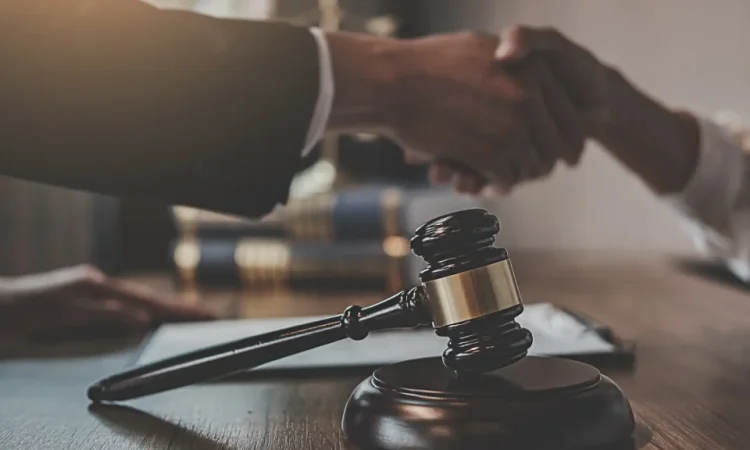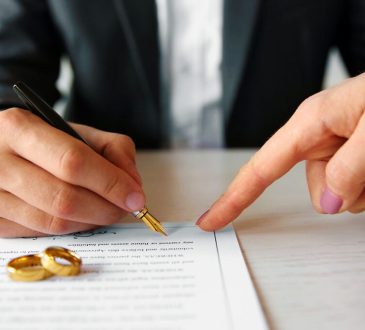
In the wake of a serious crash or on-the-job injury, most people are forced to make fast decisions with limited information. Medical care comes first, but questions about fault, insurance, lost wages, and long-term recovery follow quickly—and each choice can affect the value of your claim. In 2025, local experience matters more than ever as insurance carriers rely on stricter claim protocols and digital tools to minimize payouts. Experienced Yakima attorneys help organize evidence, manage communications, and push for fair outcomes at the right time. With guidance from firms like Lehmbecker Law, injured residents gain a structured plan to move from uncertainty to informed action while protecting their rights under Washington law. This article outlines how Yakima Personal Injury cases are handled and how local counsel can strengthen your claim at every step.
Key steps to follow after workplace or vehicle-related accidents
The first hours after an injury can set the tone for your entire case, so focus on safety, medical attention, and documentation. Seek emergency care immediately—even if symptoms seem mild—because delayed pain and hidden injuries are common after collisions and falls. Contact law enforcement for vehicle accidents and ensure a report is filed; similarly, report workplace incidents promptly to your supervisor and complete an incident form. If you are hurt at work in Washington, file your L&I claim as soon as possible and follow recommended treatment plans. Wherever the injury occurs, take photos of the scene, your injuries, property damage, and any hazardous conditions to preserve details that may vanish quickly. Keep your comments brief and factual, and avoid discussing fault at the scene, as offhand remarks can be used against you later in a Yakima Personal Injury claim.
A practical checklist for the first 24–72 hours
- Get a full medical evaluation and keep copies of diagnoses, treatment plans, and restrictions.
- Obtain the police report number or workplace incident report and request copies later.
- Photograph the scene, vehicles, equipment, weather conditions, and visible injuries.
- Gather contact and insurance information for drivers, employers, and witnesses.
- Preserve physical evidence like damaged clothing or equipment, and save dashcam footage.
- Notify your insurer of the crash and your employer of any missed work, but decline recorded statements until you’ve spoken with a lawyer.
Over the next few weeks, continue documenting your experience with a simple journal noting pain levels, sleep issues, missed activities, and work limitations. Track expenses and time off, including mileage to medical visits, co-pays, and over-the-counter items recommended by your provider. Be cautious on social media; even casual posts can be misinterpreted by insurers. If a work injury involves a third-party (like a subcontractor or manufacturer), preserve all purchase orders, safety manuals, and delivery logs that could show responsibility. Finally, get legal guidance early to avoid procedural missteps that can undercut strong claims; a local attorney can coordinate medical records, insurer notices, and evidence preservation in alignment with your goals.
Understanding negligence laws and their role in 2025 personal injury cases
Washington personal injury claims hinge on proving four elements: duty, breach, causation, and damages. A driver may owe a duty to follow traffic laws; a property owner must keep premises reasonably safe; and a contractor has obligations under safety protocols. When that duty is breached and the breach causes injury, the law allows recovery for medical bills, lost wages, and pain and suffering. In 2025, these fundamentals remain the same, but the quality of evidence—digital photos, telematics, surveillance, and medical narratives—often decides who is believed and how much compensation is paid. Washington’s rule of pure comparative negligence reduces recovery by your percentage of fault, so meticulous documentation can counter insurer arguments that you share responsibility.
How Washington rules affect common scenarios
- Rear-end collision: Liability is often clear, but insurers may argue partial fault if brake lights were out or there was sudden braking. Consistent repair invoices and witness statements strengthen the case.
- Workplace third-party claim: L&I covers medical care and wage replacement, but if a non-employer caused the harm (e.g., a negligent driver or equipment vendor), you can pursue a separate personal injury claim for full damages.
- Premises injury: A store’s neglect of known hazards—such as a recurring spill—can establish negligence, but photos, incident logs, and maintenance records are key to proving notice and breach.
Because Yakima Personal Injury cases frequently involve agricultural worksites, busy highways, and mixed commercial-residential areas, evidence can be dispersed across multiple sources. A traffic citation for the at-fault driver may support negligence per se, but defense teams often contest causation or medical necessity. Preserving vehicle “black box” data, dashcam footage, and 911 call logs can anchor the timeline and clarify the mechanics of impact. Medical records that connect symptoms to the incident—supported by specialist notes—are crucial to overcome insurer claims of preexisting conditions. Experienced counsel, including teams like Lehmbecker Law, align legal standards with practical proof so the story of what happened is clear, consistent, and credible.
Why early consultation strengthens claim validity and evidence collection
Time is a hidden factor in most claims. In Washington, the statute of limitations for most personal injury cases is three years, but shorter timeframes apply elsewhere: workplace injuries must typically be reported quickly, with L&I claims filed within one year for injuries (and generally two years for occupational disease), and claims against government entities require formal notice and a 60-day waiting period before filing suit. Evidence is also perishable; surveillance video can be overwritten in days, vehicles get repaired, and witnesses forget details. Early legal guidance ensures preservation letters go out fast, medical documentation is complete, and deadlines are tracked accurately. It also helps you avoid common traps, like recorded statements, overly broad medical authorizations, or premature low settlements that don’t reflect future care needs in a Yakima Personal Injury case.
Time-sensitive evidence to secure quickly
- Scene and vehicle photos, including close-ups of impact zones and debris fields.
- Event Data Recorder (EDR) downloads and telematics from cars, trucks, or fleets.
- 911 recordings, dispatch logs, and bodycam footage when available.
- Surveillance video from nearby businesses or homes along the travel path.
- Employer safety policies, incident reports, training logs, and maintenance records.
- Medical imaging and early clinical notes linking the mechanism of injury to symptoms.
The sooner you consult counsel, the stronger your medical and damages narrative becomes. Lawyers help you schedule appropriate specialists, capture limitations with objective testing, and coordinate billing so care isn’t delayed by insurance disputes. They also manage communications with carriers, preserving your rights while stopping repetitive calls and pressure tactics. If your case involves overlapping benefits—like PIP, health insurance, and L&I—an attorney can harmonize coverages, negotiate liens, and time settlement for maximum net recovery. Firms with regional reach, such as Lehmbecker Law, often have established processes and provider relationships that streamline evidence collection and reduce the risk of gaps that insurers love to exploit.
Navigating insurance negotiations with attorney guidance
Insurance adjusters handle claims daily and are trained to control the narrative, narrow medical causation, and minimize payouts. They may request recorded statements, ask leading questions, or push you to sign broad releases that reveal years of unrelated medical history. In Washington, drivers may have optional PIP coverage and UM/UIM benefits; understanding how these coverages coordinate with health insurance avoids double billing and protects your right to recover. Carriers commonly use software-driven valuation models that discount pain and suffering without robust documentation of activity limitations, treatment adherence, and long-term impact. An attorney acts as a buffer, managing the flow of information while building a persuasive package that accurately reflects your losses and future needs.
Strategies lawyers use to improve settlement outcomes
- Develop a cohesive medical narrative: tie mechanism of injury to diagnoses with specialist opinions, imaging, and functional assessments.
- Calculate full damages: include wage loss, diminished earning capacity, mileage, home care, and future treatment costs—not just initial bills.
- Use persuasive visuals: crash diagrams, time-lapse scar healing, and day-in-the-life videos to convey non-economic harm.
- Control subrogation: negotiate health and PIP liens to lower paybacks and preserve more of the settlement for you.
- Sequence negotiations: resolve property damage early, then pursue bodily injury when treatment has stabilized or a clear prognosis exists.
- Prepare for litigation: demonstrate readiness with filed complaints, expert consultations, and trial exhibits, which often prompts higher offers.
A strong demand package is more than a stack of records; it’s a curated story supported by evidence and anchored in Washington law. Attorneys challenge lowball valuations with comparable verdicts, medical literature, and vocational opinions that quantify how the injury changed your day-to-day life. They also anticipate insurer arguments around preexisting conditions or treatment gaps and address them proactively. Clear communication with you is essential to set expectations about timelines, negotiation ranges, and risks so each choice is informed. This disciplined approach helps level the playing field—especially in complex cases where multiple policies, carriers, or at-fault parties are involved.
Securing fair settlements through local legal experience and advocacy
Local knowledge can make the difference between a fair offer and a drawn-out dispute. Yakima County’s roads, agricultural worksites, and freight routes pose unique risks that shape how crashes happen and how injuries unfold over time. Local lawyers know where to find critical evidence—from orchard equipment maintenance logs to nearby traffic cameras at high-collision intersections. They’re familiar with regional medical providers, common treatment pathways, and the challenges rural clients face when specialist appointments require long travel. They also understand juror tendencies and mediator preferences in the Yakima County Superior Court system, allowing them to calibrate settlement expectations realistically for Yakima Personal Injury claims.
When settlement isn’t enough: how litigation moves your case forward
- Filing and discovery: Attorneys file the complaint, serve defendants, and begin exchanging evidence through interrogatories, requests for production, and depositions.
- Expert development: Specialists in biomechanics, medicine, or vocational rehab analyze causation and damages to support trial themes.
- Motions and mediation: Pretrial motions clarify legal issues; mediation tests settlement potential with a neutral third party.
- Trial preparation: Lawyers craft opening statements, witness outlines, exhibits, and demonstratives; you receive coaching to testify clearly and confidently.
- Trial and post-trial: If the case proceeds, a jury verdict resolves liability and damages; post-trial motions or appeals may follow depending on outcomes.
Effective advocacy blends legal skill with client-centered support. Your attorney should update you regularly, explain options in plain language, and respect your risk tolerance when evaluating offers. Fee structures—often contingency-based—should be transparent, with a clear plan for costs and lien resolution. The goal is not merely closing a file but restoring stability in your life with compensation that matches the true scope of harm. For many injured residents, partnering with a seasoned local firm, including Lehmbecker Law, brings the depth of resources and negotiation leverage needed to move insurers toward fair numbers. When your claim is properly built and strategically presented, Yakima Personal Injury cases are well-positioned to secure outcomes that help you pay for care, replace lost income, and move forward with confidence.




